Succulents are charming plants that come in many shapes and sizes and are highly collectable. They have fleshy leaves that store water, so don't need much watering, so can survive periods of drought and do not need much watering. They make excellent house plants and can also be grown outside in summer.
You may also like
- How to grow succulents
- How to water succulents
- How to propagate succulents
- The best soil for succulents
There are many different types of succulents, including echeveria, crassula, sedum, lithops, haworthia and more. Many of the succulents featured here are natives of South Africa and South America. They can withstand some cold, but require winter protection in all but the mildest areas, needing a period of dormancy when they won’t grow. Read our guide to growing succulents.
Here's our guide to the types of succulents with handy pictures to guide you.
Types of succulents to grow
Crassula
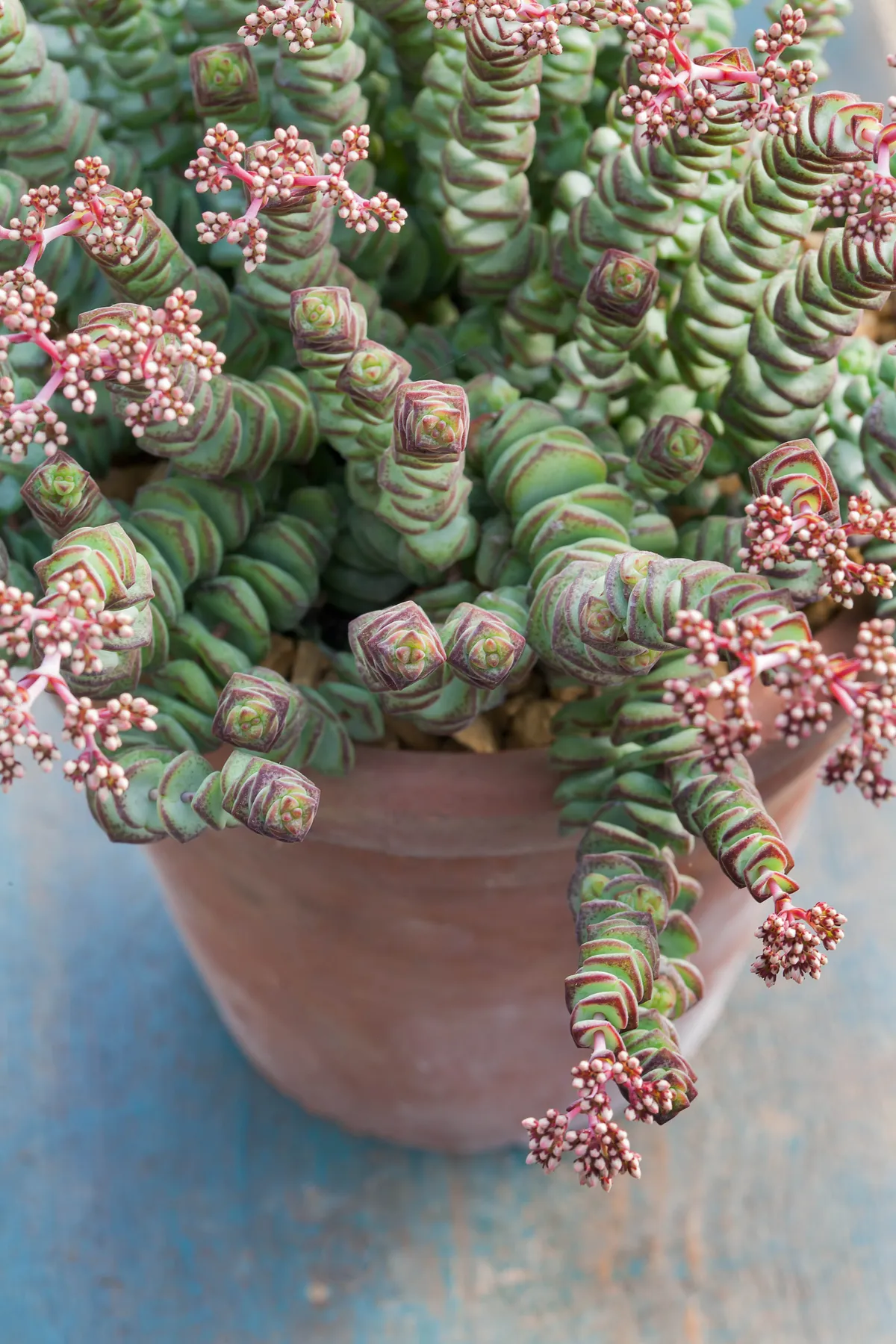
There are more than 200 species of crassula, native to South Africa. The most commonly known is Crassula ovata, the money plant. Crassula rupestris subsp. marnieriana has red-tipped leaves that are tightly stacked along the stem. Crassula lanuginosa is a prostrate, mat-forming succulent.
Crassula care: everything you need to know about growing crassula plants
Echeveria
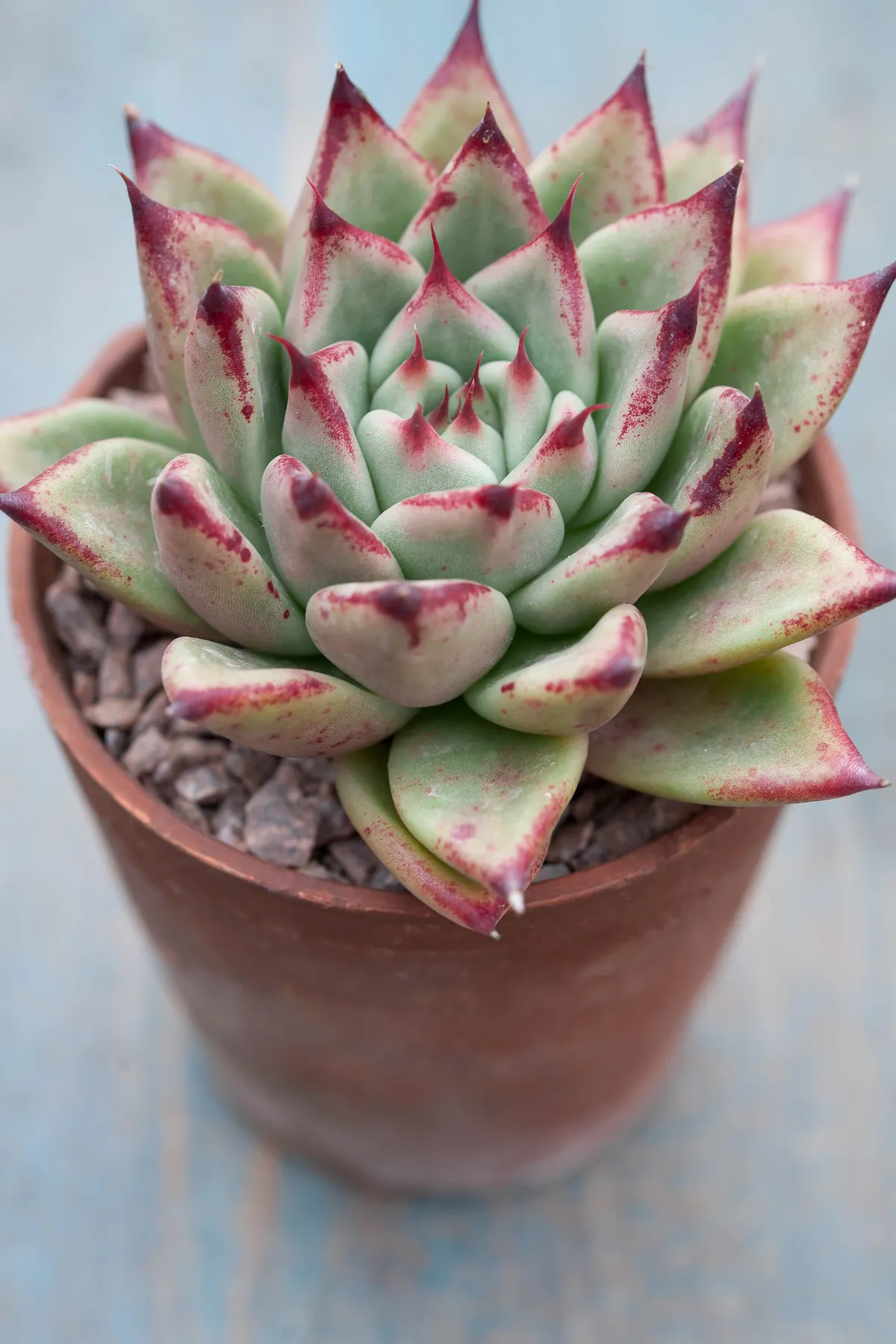
Echeverias, also known as hen and chicks, have rosettes of fleshy leaves that can be blue-green, edged with red or purple, or variegated. Echeveria agavoides ‘Ebony’ is one of the most sought-after echeverias. From Mexico. Here's our guide to growing echeveria
Aloe
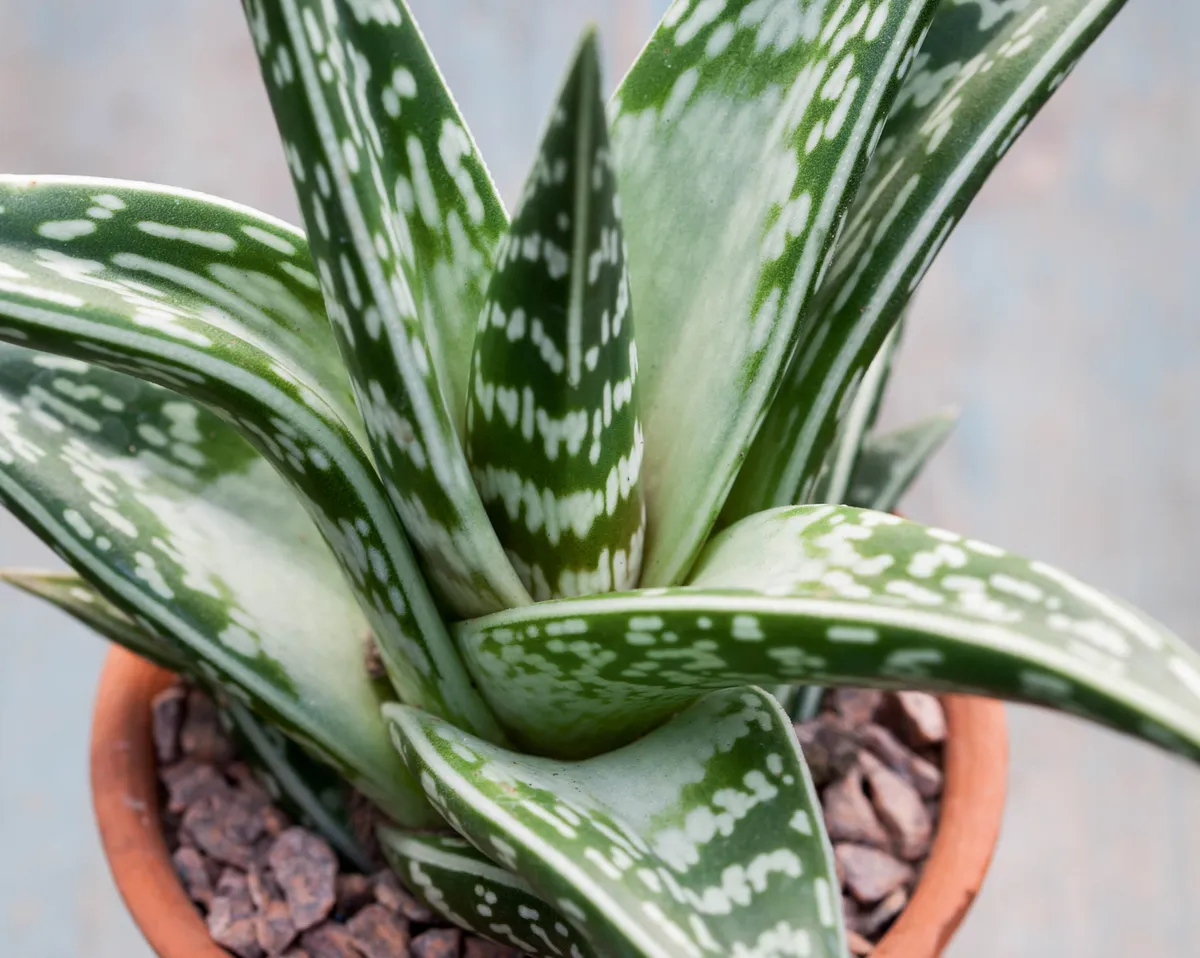
Aloes have attractive spiky leaves that are often attractively patterned or variegated. The sap from the leaves can be used to relieve burns and sunburn. Aloe variegata is an easy to grow as a houseplant. The thick, short leaves of Aloe mitriformis acquire a reddish tint in dry conditions.
Haworthia
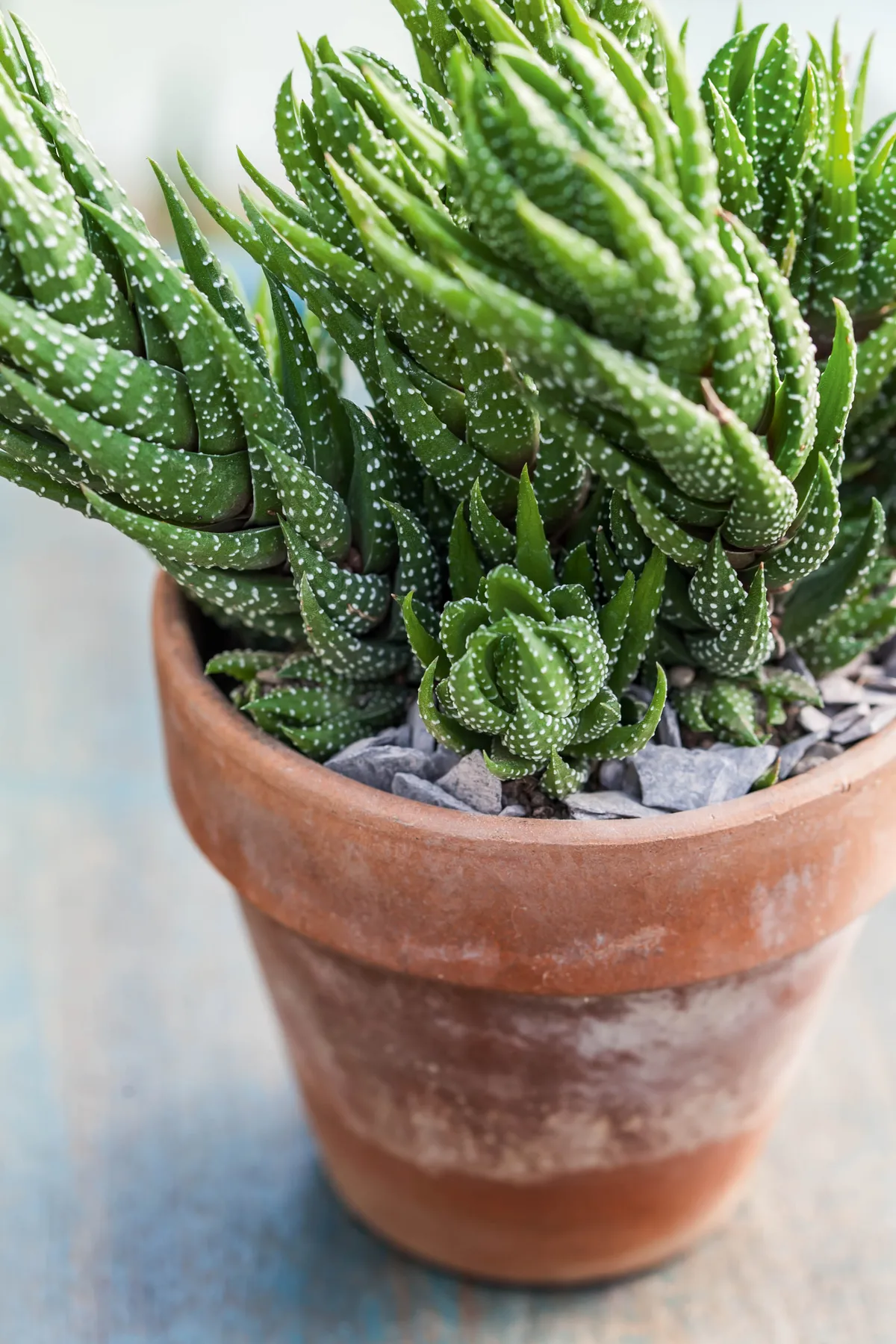
Haworthias have spiky stems, often with raised white stripes or bumps ('warts'). Haworthia reinwardtii has dark-green leaves patterned with white. Tubular flowers may appear on mature plants in summer.
Lithops (living stones)
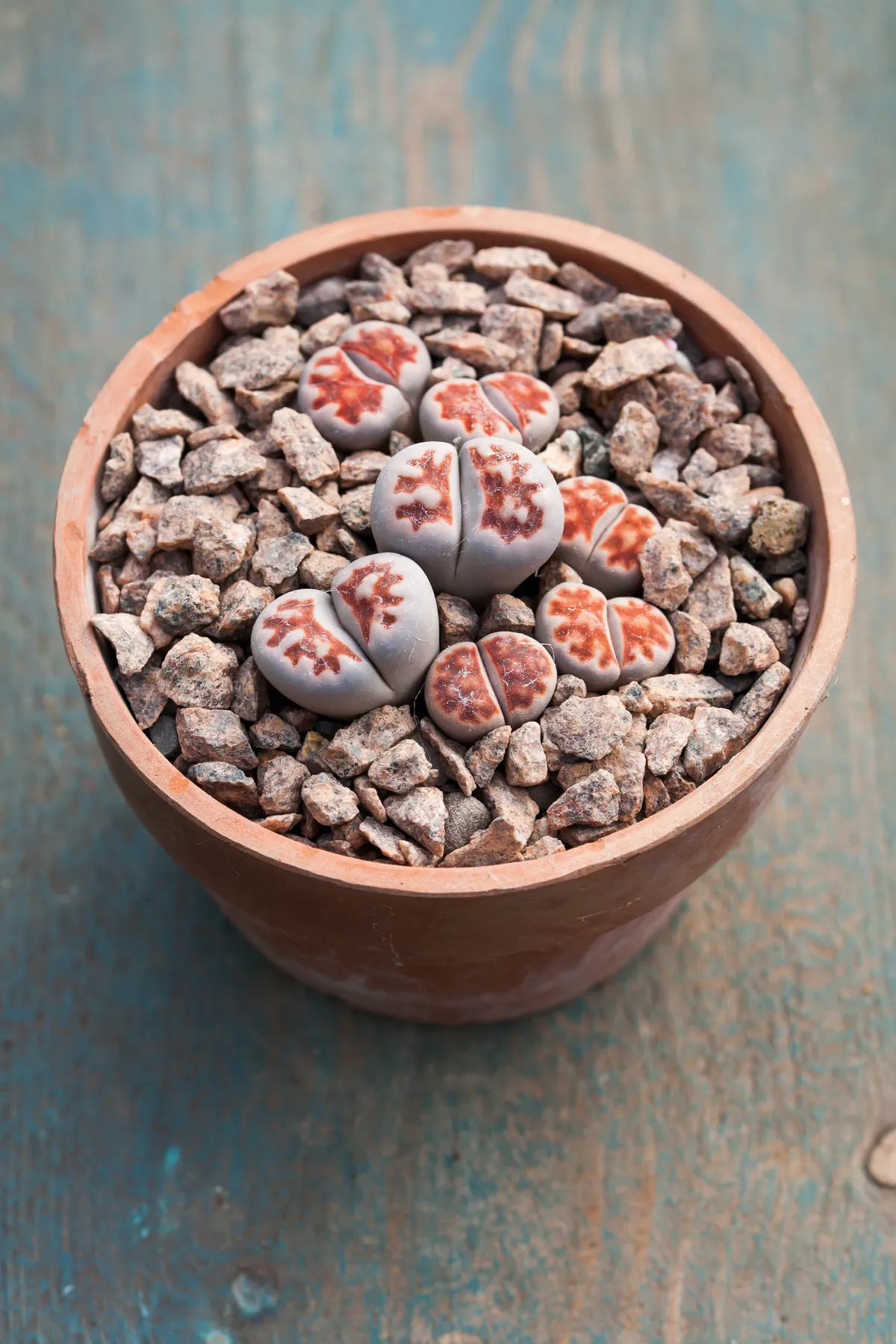
The leafless stems of Lithops look like small stones, hence their name of living stones. In autumn, a small daisy-like flower may appear. Lithops karasmontana has clumps of buff-coloured leaves.
Lithops: How to grow lithops from seed
Aeonium
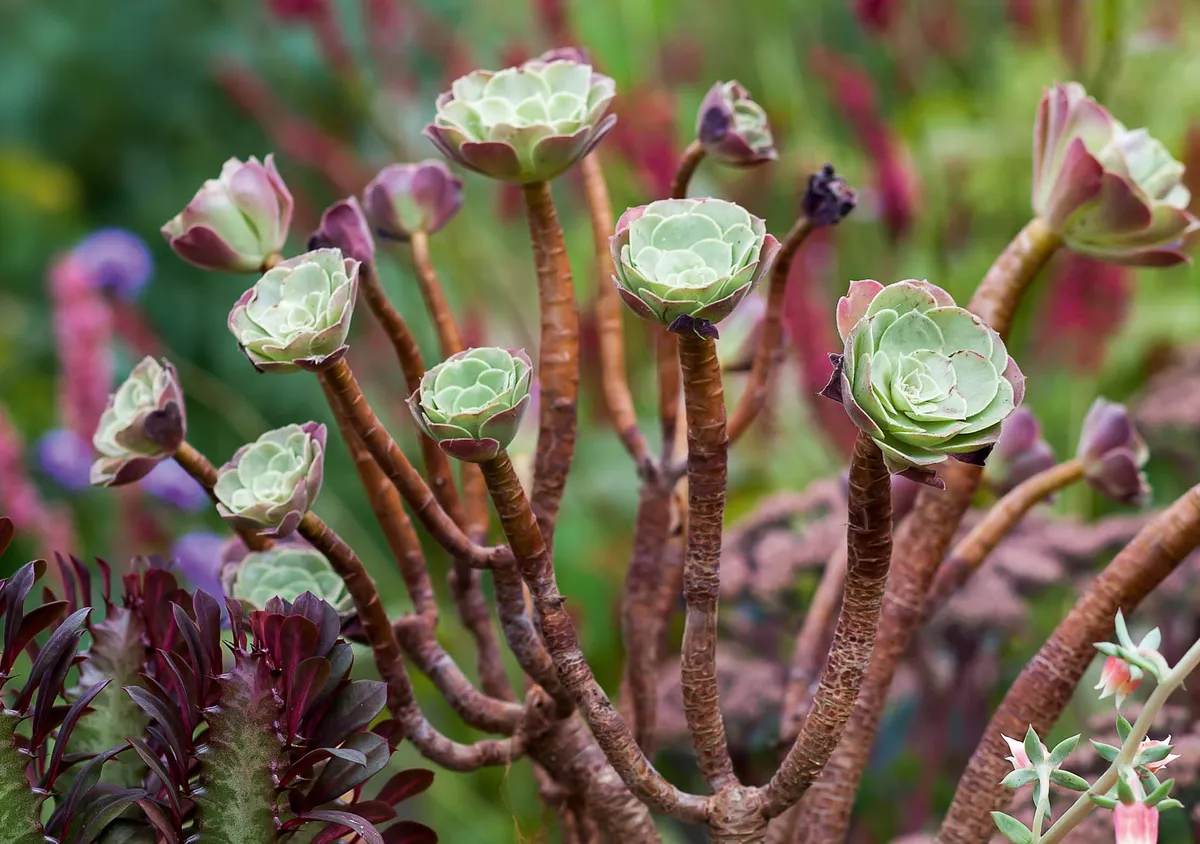
Aeoniums are architectural plants that have rosettes of fleshy leaves atop tall, often branching stems. In early spring, cones of starry flowers may appear on mature plants. Aeonium arboreum has pink-edged green rosettes on corky stems. Here's our detailed guide to growing aeonium.
Tender euphorbias
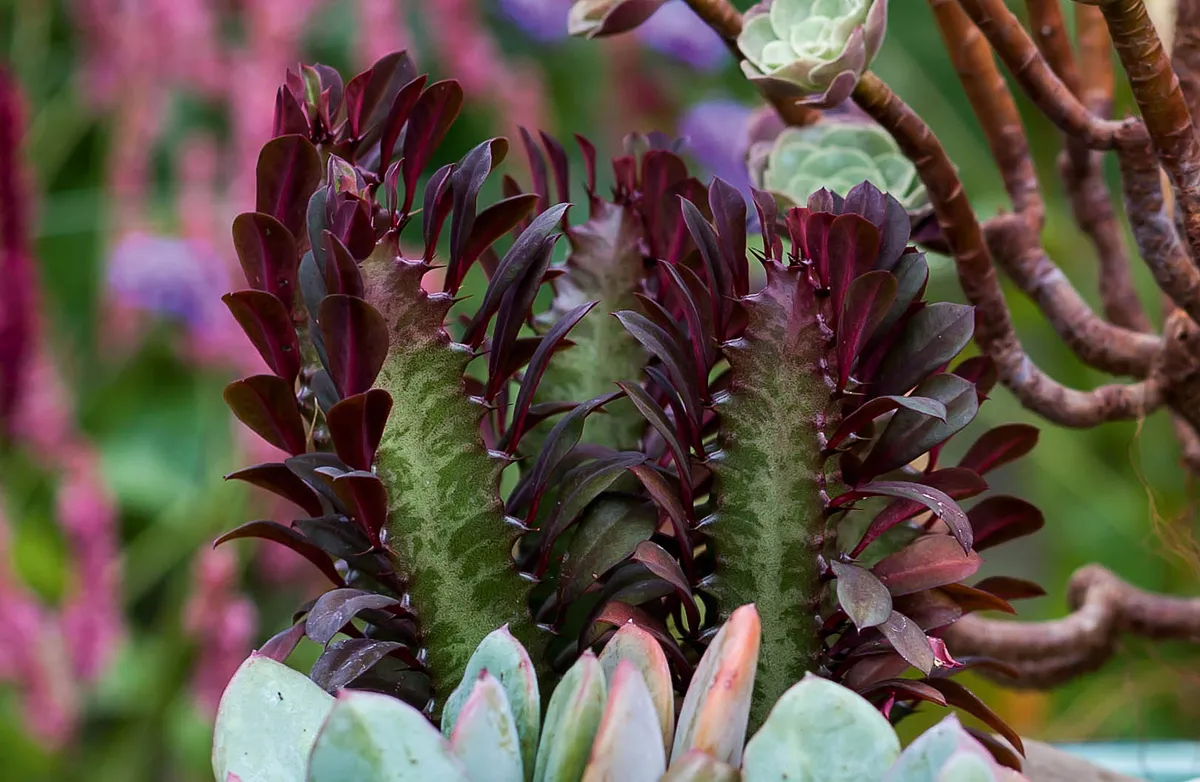
The euphorbia family includes several cactus-like plants that are striking and easy to care for. They include Euphorbia trigona f. rubra, the African milk tree, and Euphorbia milii, which has attractive red flowers. Euphorbia obesa is a ball-shaped succulent that is exquisitely segmented and ribbed. Wear gloves when handling as the sap can be an irritant to skin and eyes.
Sedum
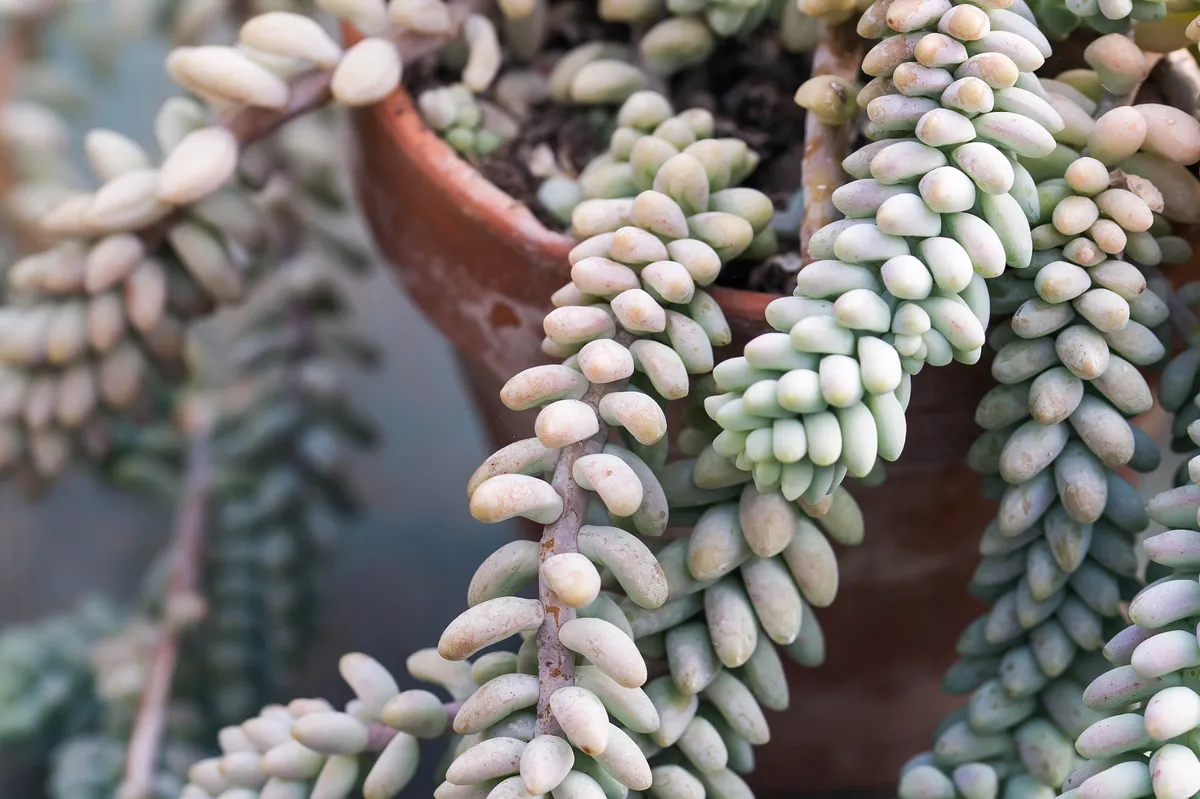
Succulent sedums are also known as stonecrops, and vary greatly in appearance. Sedum morganianum is a Mexican native. Its trailing stems have given it the name burro’s tail of donkey's tail.
Faucaria

The name Faucaria comes from the Latin 'fauces', which means animal mouth – a reference to the curiously toothed, fleshy green leaves. Faucaria felina is known as cat jaws, cat chop or tiger jaws.
Titanopsis
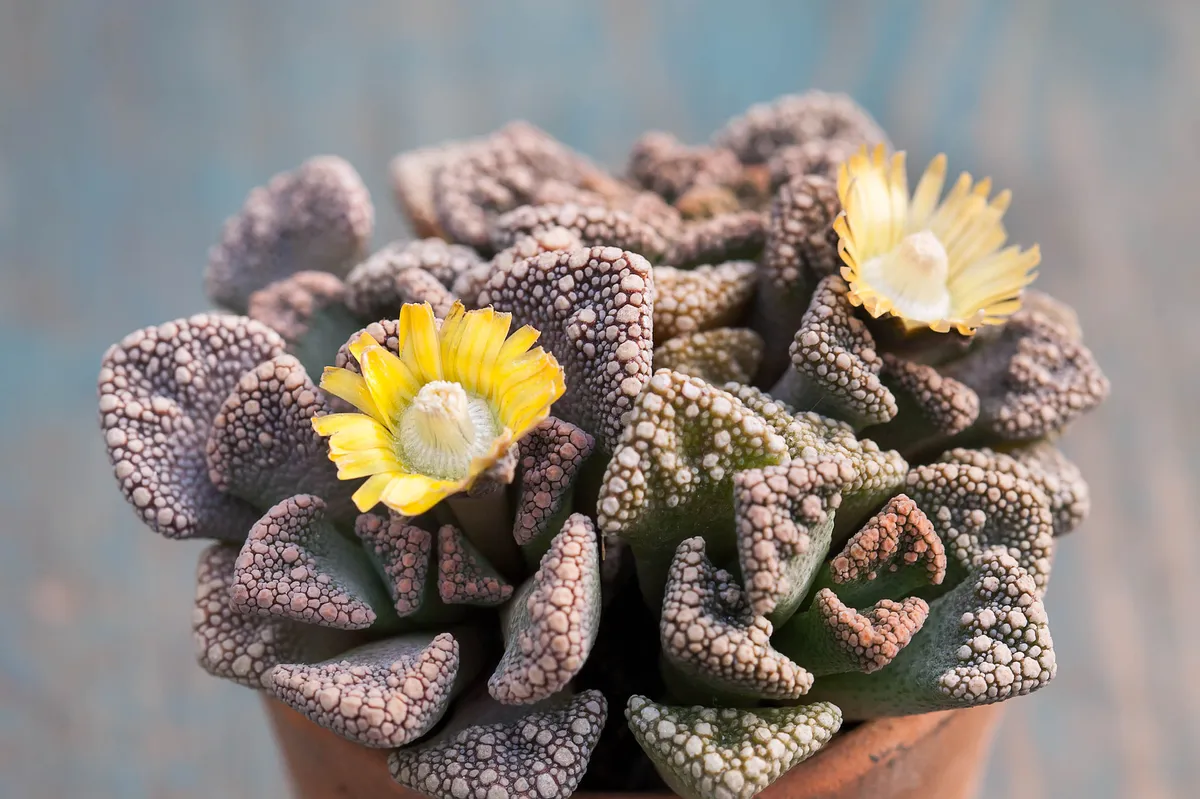
Another native of South Africa and Namibia, the tiny Titanopsis calcarea only reaches around 4cm in height. Yellow flowers appear in autumn and winter.
Fenestraria
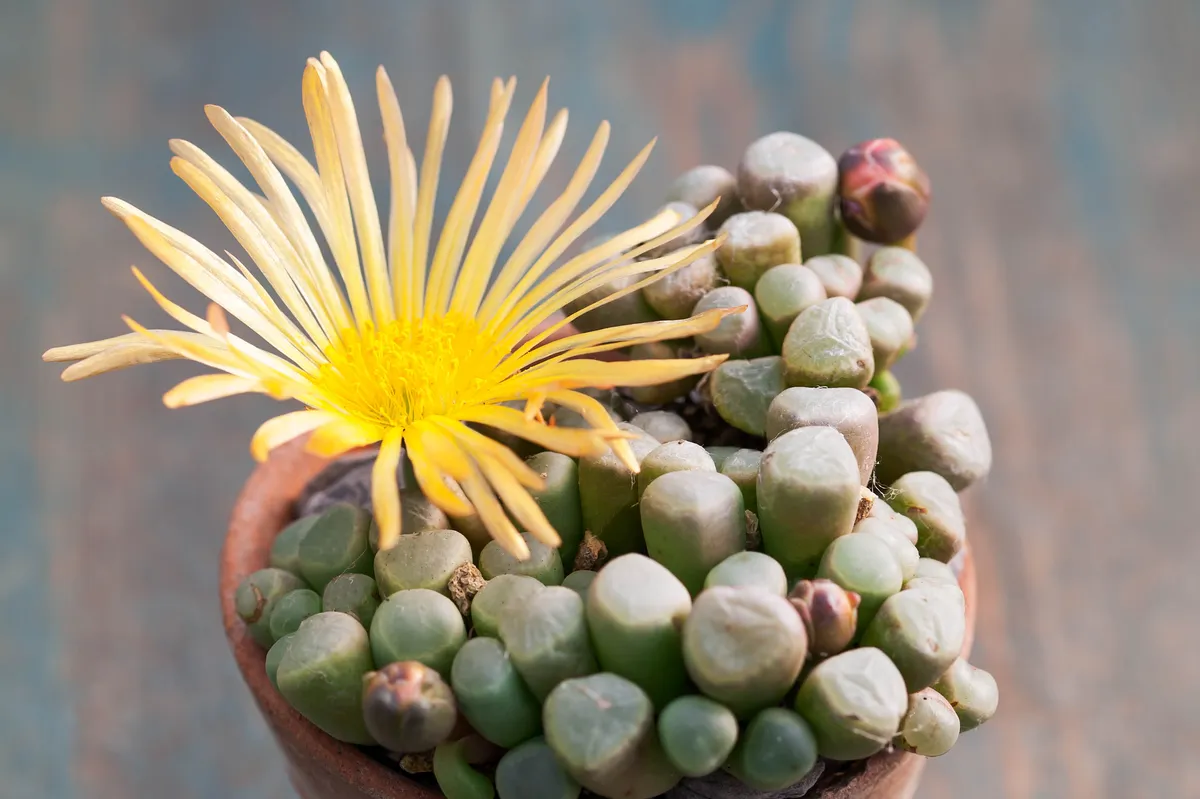
Known as baby toes and the window plant, as in the wild in South Africa and Namibia, the plant is almost completely concealed from animals, with just the tops visible for photosynthesis. Keep on the dry side during the hot summer months. Fenestraria rhopalophylla has daisy-like flowers in autumn. RHS H2, USDA 10a-11.
x Graptopetalum

x Graptopetalum is a hybrid of Graptopetalum and Echeveria. x Graptoveria ‘Debbie’ has pink leaves and purple-pink flowers in winter above pink leaves. x Graptoveria ‘Fred Ives’ is a hybrid of Graptopetalum paraguayense and Echeveria gibbiflora.
Here's how to grow succulents